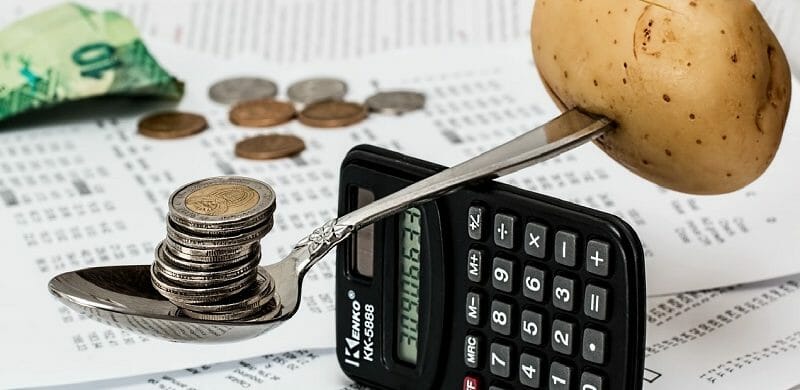Last Updated: March 25, 2025
Improve your Ratio Leads to Smarter Financial Strategies

Disclaimer: We are not qualified legal or tax professionals and are not giving advice. Always speak with a qualified professional before making any legal or financial decisions.
The debt to equity ratio is a crucial financial health indicator. Understanding this metric helps you make informed decisions about leveraging debt. A good debt to equity ratio can significantly impact your financial opportunities and borrowing power.
This concept varies across industries, influencing how you manage debt and make financial decisions. Learning to interpret and improve your ratio leads to smarter financial strategies.
To skip the article and speak to a debt specialist right away, click here for a free consultation.
What is Equity?
Equity, in personal finance, represents the value of your assets minus liabilities. A good debt to equity ratio starts with understanding your equity. Homes often provide the most significant equity; for instance, a $200,000 house with a $150,000 mortgage yields $50,000 in equity.
While cars and boats typically depreciate, assets like stocks, jewelry, and artwork may contribute to your equity depending on their market value. Your total equity, a key component in calculating a healthy debt to equity ratio, is the sum of all these valuable assets minus your debts.
If you would like more information on what a good debt to equity ratio is, contact us for your FREE consultation today. See how much money you can save with our debt settlement program.
What are Assets?
In personal finance, assets and equity often overlap. Individuals consider total assets, including income, when assessing financial health. A key metric compares total debt to total assets.
A good debt to equity ratio means more assets than debts, indicating financial stability and better credit access. Higher ratios may signal risk. Understanding this balance is crucial for informed financial decisions and overall economic well-being.
What is Debt?
Debt includes all you owe: loans, credit cards, mortgages, and student loans. It's categorized as long-term debts (such as mortgages and student loans) or short term debt (like credit card balances and personal loans). Your total debt, crucial for determining a good debt to equity ratio, is the sum of these. Understanding this total is key to assessing your financial health and borrowing capacity.
What is Debt to Equity Ratio?
A ratio compares one value to another. The debt to equity ratio compares how much debt you have to how much equity you have.
- Calculate all your assets
- Calculate all your debts
- Subtract debts from assets to get net worth
- Divide total debt by net worth
A good debt to equity ratio is typically less than 1. Example: $100,000 debt / $200,000 assets = 0.5 or 50%. Lower percentages indicate better financial health. Conversely, $200,000 debt / $100,000 equity = 2 or 200%, suggesting higher risk. The first example shows a stronger financial position than the second.
If you are not fond of math, some
online calculators will help you figure out your company's total debt due to equity ratio.
What is a debt to asset ratio?
The debt to asset ratio, preferred by lenders, expands on the good debt to equity ratio by including after-tax income. This provides a clearer picture of your financial health and ability to repay debts. It offers a more comprehensive view than the debt to equity ratio alone, helping assess borrowing capacity more accurately.
Why Do I Need A Good Debt to Asset Ratio?
You can figure out debt to assets two ways. The first is all debt except mortgage. The second is with a mortgage. Let's break it down with some numbers.
Debt to asset without mortgage
To assess your financial health and work towards a good debt to equity ratio, calculate your debt-to-income ratio. Sum up all debts (loans, credit cards, etc.) and divide by your after-tax income. For example, $10,000 in debts with a $59,000 after-tax income yields a 0.17 (17%) ratio. This quick calculation offers valuable insight into your current financial standing and potential borrowing capacity.
Debt to asset with mortgage
To calculate a comprehensive debt ratio, add annual mortgage payments to total debts and divide by after-tax income. Example: ($10,000 debt + $12,360 mortgage) / $59,000 income = 0.38 (38%).
This debt-to-asset ratio offers a clearer financial picture than a simple good debt to equity ratio. It considers all assets, not just equity. Lenders use this to assess borrowing capacity. A lower ratio suggests stronger financial health and potentially better loan terms.
What is a Good Debt to Equity Ratio?
Ideal debt ratios vary based on your financial situation. Without a mortgage, aim for below 10%; with one, under 36%. A good debt to equity ratio falls within these ranges, enhancing financial stability. Ratios over 40% often deter lenders. Similarly, keep your debt to asset ratio below 0.4 or 40%. Maintaining these levels improves your chances for loan approvals and favorable interest rates.
High and low debt to equity ratios
When you look at debt to equity ratios, a high ratio means you probably don't have enough equity to cover your debts.
A very low ratio also means you can take advantage of your equity to take out loans if you want.
A high ratio is anything over 40% or 0.4.
A low ratio is less than 36% (0.36) with a mortgage or 10% (0.1) without a mortgage.
People often have questions about specific debt to equity ratios. Let's answer them here.
- Is it better to have a higher or lower debt-to-equity ratio?
Answer: A lower debt to equity ratio is better. - Is a debt-to-equity ratio below 1 GOOD?
Answer: It means you have more assets than debt. - Is 0.4 debt-to-equity ratio good?
Answer: This is also 40%. It is not very good. - What does a debt-to-equity ratio of 2.5 mean?
Answer: It means you have 2.5 times the debt as assets. - Is 1.7 A good debt-to-equity ratio?
Answer: You have 1.7 times the debt as assets - Is 0.5 a good debt-to-equity ratio?
Answer: It is higher than banks like to see. - What does a debt-to-equity ratio of 0.8 mean?
Answer: You have almost more debt than you do assets - Is 10% a good debt-to-income ratio?
Answer: Yes. It is very good. - Is a debt-to-equity ratio of 75% good?
Answer: No. It is too high.
How to Improve your Debt to Equity Ratio
To achieve a good debt to equity ratio, focus on reducing debts and increasing assets. This may involve paying down loans and credit card balances while boosting savings and investments. Approach this process gradually, implementing strategies that align with your unique financial situation and long-term goals.
What if I can't improve my debt to equity ratio?
If you have credit card debt in excess of $10,000 and are having trouble paying it down, Pacific Debt, Inc may be able to help you out.
Contact one of our debt specialists for a free consultation.
Some Business Terminology
Whether you are an individual or a small business owner, this concept applies to both. It's good to know what these terms mean.
Balance Sheet
A company's balance sheet provides a snapshot of its financial health, detailing assets, liabilities, and shareholders' equity. This crucial document helps assess a good debt to equity ratio, indicating where financial changes may be needed and offering insights into the company's debt management and overall financial stability. Before investing, review the company's balance sheet to understand its financial structure.
Capital
Capital is a company's available money or assets, forming its equity. Companies can raise capital by offering stock, impacting their debt to equity ratio. Capital-intensive industries, like finance and manufacturing, require significant investments in assets.
A good debt to equity ratio is crucial for these companies, balancing substantial assets against debts. This balance indicates financial health and growth potential.
Cash flow
A company's cash flow looks at the amount of cash in and cash out. Cash flow can indicate the health of a company's finances. Companies also have a cash ratio that considers the cash or assets that can be turned quickly into cash versus debt.
Liabilities
Liabilities represent a company's debt load, while assets minus liabilities indicate financial health. A good debt to equity ratio balances these elements. Total liabilities include all debts and commitments owed. This balance is crucial for assessing stability and guiding decisions about borrowing and investment.
Financial leverage
A company's important financial metric of leverage is using a company's debt to buy assets. Debt to equity ratio is a form of leverage ratio.
Assets
A company's assets include cash, inventory, buildings, and property added to the intangible assets. Assets minus liabilities yield the net worth of a company's personal assets.
Corporate finance
Corporate finance manages funding sources, capital structure, and shareholder value. It balances equity (asset ownership with liabilities) and debt financing (raising capital through bonds).
A good debt to equity ratio optimizes this funding mix. While businesses focus on this balance, individuals have additional debt options like credit cards and personal loans.
Understanding these concepts aids in effective financial management for both companies and individuals.
Shareholders equity
The total shareholder equity is the amount of money that would be returned to shareholders if the company was liquidated. Total shareholders equity represents the net worth of equity shareholders in the company.
FAQs
What is the debt-to-equity ratio (D/E ratio)?
The debt-to-equity ratio measures a company's financial leverage by comparing debt to equity. A good debt to equity ratio indicates a healthy balance between borrowed funds and shareholder investments. This crucial metric helps evaluate financial risk, stability, and structure, informing investors and lenders about a company's financing approach.
How is the debt-to-equity ratio calculated?
A good debt to equity ratio is calculated by dividing total liabilities by shareholders' equity. The formula: Debt-to-Equity Ratio = Total Liabilities / Shareholders' Equity. This simple calculation reveals a company's financial leverage, balancing debt against owner investments.
What does a high debt-to-equity ratio indicate?
A high debt-to-equity ratio typically indicates that a company has been financing its operations primarily through debt rather than equity. While high leverage can amplify returns during periods of growth, it also increases the company's financial risk, making it more vulnerable to economic downturns or changes in interest rates.
What does a low debt-to-equity ratio indicate?
A low debt-to-equity ratio often signals financial stability, indicating a company relies more on equity than debt. While this suggests lower risk, a good debt to equity ratio balances stability with strategic borrowing, allowing a company to maintain financial health while capitalizing on growth opportunities through the calculated use of debt financing
What is considered a good debt-to-equity ratio?
A good debt to equity ratio varies by industry, business model, and growth stage. While 1 or lower is often seen as conservative, ideal levels differ widely. Some sectors thrive with higher ratios, while others prefer lower. Consider your specific context, industry benchmarks, and goals when assessing your ratio. Ultimately, balance is key for financial health and growth potential.
How does the debt-to-equity ratio impact investors?
Investors use the debt-to-equity ratio to gauge a company's financial health and risk profile. A good debt to equity ratio often attracts investors, signaling financial stability and resilience in economic challenges. Conversely, higher ratios may deter investors due to increased financial risk, making it crucial for companies to balance debt and equity effectively.
Can the debt-to-equity ratio be too low?
While a low debt-to-equity ratio is generally viewed positively, an extremely low ratio may indicate that a company is overly reliant on equity financing, potentially missing out on opportunities to leverage debt for growth or tax benefits. Investors need to consider the context of the ratio within the company's industry and growth objectives.
Conclusion
A good debt to equity ratio is key to financial health in personal and business contexts. It balances borrowed funds and owned assets, providing stability and growth potential. While lower ratios generally indicate less risk, some debt can fuel growth when used wisely. The ideal ratio varies by situation and industry but aims for a balance that satisfies lenders and investors.
If your ratio is high, consider reducing debt or increasing equity to improve your financial standing. Understanding and managing this ratio is crucial for long-term financial success. If you are struggling with overwhelming debt and want to explore your debt relief options, Pacific Debt Relief offers a free consultation to assess your financial situation. Our debt specialists can provide objective guidance relevant information and support to help find the right debt relief solution.
*Disclaimer: Pacific Debt Relief explicitly states that it is not a credit repair organization, and its program does not aim to improve individuals' credit scores. The information provided here is intended solely for educational purposes, aiding consumers in making informed decisions regarding credit and debt matters. The content does not constitute legal or financial advice. Pacific Debt Relief strongly advises individuals to seek the counsel of qualified professionals before undertaking any legal or financial actions.
References
https://www.investopedia.com/terms/d/debtratio.asp
https://finance.zacks.com/personal-finance-debt-ratio-6256.html
https://www.cnbc.com/2017/10/27/what-average-or-middle-class-american-means-matters-more-than-ever.html
✔ Accredited by Better Business Bureau with BBB A+ rating (4.93 rating and 1678 reviews)
✔ US News and World Reports and Bankrate ranked Pacific Debt Relief as one of “The Best Debt Relief Companies of 2024”
✔ 6.9 star rating by BestCompany.com (over 2379 client reviews)
✔ 4.8 star rating by TrustPilot based (over 1613 verified consumer reviews)
✔ ConsumerAffairs.com Accredited (over 544 verified reviews with an average rating of 5 stars)
✔ A Top 10 Rated Compan by TopTenReviews.com , ConsumersAdvocate.com and Top10debtconsolidation.com
✔ 4.6 star rating by Google (229 client reviews)
✔ 100% rating by SuperMoney (9 client reviews)
Reduce Your Credit Card Debt By Up to Half

BBB Reviews | 4.9/5.0 Rating









 Do Not Sell My Personal Information
Do Not Sell My Personal Information